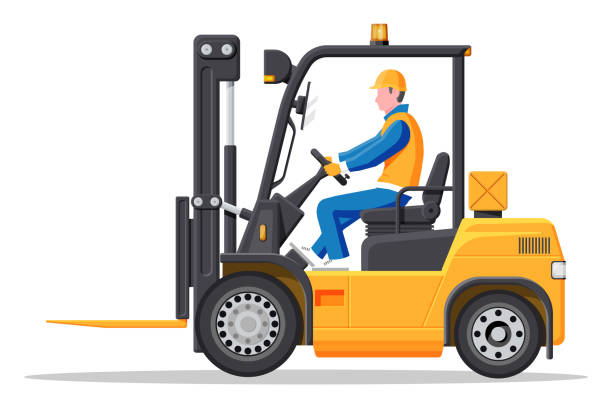Title Page
Safety Observation
-
Site
-
Date and time of observation
-
Completed by
-
Team Member (TM) observed
Safety Observation
Safety Observation
-
Is this a Safety Observation where 1. Safe or Unsafe Behaviour was observed or 2. A planned Safety Observation
- 1. Safe or Unsafe Behaviour Observed
- 2. A planned Safety Discussion
-
Was a Safe or Unsafe Behaviour observed
-
What was the Safe behaviour observed
- Handling sharp object
- Housekeeping standards
- Manual handling techniques
- Equipment use
- Strapping pallet/product
- Truck/Vehicle related
- Forklift related
- Wearing PPE
- Other
-
Detail of Safe behaviour observed
-
Thank team member for working safely and recognise their contribution
-
Detail of Safe behaviour observed
-
Thank team member for working safely and recognise their contribution
-
What was the Unsafe behaviour observed
- Handling sharp object
- Housekeeping standards
- Manual handling techniques
- Equipment use
- Strapping pallet/product
- Truck/Vehicle related
- Forklift related
- Wearing PPE
- Other
-
Detail of Unsafe behaviour observed
-
Educate team member of required safe working method and let them know we don't want them to be injured at work
-
Detail of Unsafe behaviour observed
-
Educate team member of required safe working method and let them know we don't want them to be injured at work
-
Detail of safety discussion
-
What is the planned Safety Observation in relation to
- Forklift & Pedestrian Interaction
- Handling Sharp Objects
- Housekeeping
- Loading Trucks
- Customer Safety (Retail Store only)
- Manual Handling
- Pallet Racking
- Product Handling (Picking Orders)
- Product Strapping (Warehouse only)
- Product Strapping (Retail Store only)
- Storing Product in Racks
Team Member Observations
-
Team Member has assessed the task for potential risk of sharp objects
-
Gloves are used for all tasks where sharp objects are handled (including tiles)
-
Gloves are rated to level C blade cut resistance (EN388: 2016 )
-
Team Member uses good manual handling techniques
-
Team member knows not attempt to catch or reach for falling tiles and let them fall to the ground or a stop
-
Knives are in a good condition, sharp and safe working order
-
Only recommended cutting tools are used e.g. safety knives, Klever Kutter knives or self-retracting bladed knives
-
Personal knives are not in use
-
Knives are not pulled back towards the body
-
Are broken tiles being disposed
-
Are they handled in a safe manner
-
Are they placed in bin carefully
-
Has the whole area been cleared of sharp hazards
-
Discuss with a Team Member - What would they do if they noticed an unsafe behaviour when handling sharp objects (rate their knowledge)
Team Member Observations
-
The floor is clear of rubbish & debris
-
Floors have been swept & are reasonably dust free
-
There are no objects protruding into aisles or walkways
-
Office/Store work stations are kept organised and tidy, with no unnecessary items in the area
-
Team Member is disposing of waste that he/she is working on correctly (e.g. general waste, pallet strapping & plastic etc)
-
Rubbish bins are not overloaded & are regularly emptied
-
There is no rubbish, broken tiles or packaging in racks, between pallets or down sides of equipment
-
When putting pallets in rack, there is no strapping or racking hanging from pallet
-
All Emergency Equipment and Exits are clear of obstructions
-
Discuss with a Team Member the overall housekeeping of the site (rate their knowledge)
Team Member Observations
-
Truck driver is in Safe Zone
-
Forklift Operator has checked for any obstructions (i.e. pallets already on truck, mezzanine deck etc.)
-
Pallets being loaded are correctly wrapped & strapped for travel
-
Forklift Operator correctly uses horn while driving in and out of doorways and around trucks
-
Forklift Operator looks behind before reversing back from the truck
-
Team Member as the pallet been positioned appropriately to maintain vehicle stability & so there is no gaps between pallets
-
Pallets are correctly secured to truck with suitably rated ratchet straps
-
Chain of Responsibility Forms are completed
-
Discuss with a Team Member - What would they do if they noticed an unsafe behaviour when loading trucks (rate their knowledge)
Team Member Observations
-
Team Member has assessed the risks of the task & taken all reasonable steps to reduce the risk as much as possible
-
Wherever possible, materials are moved with Material Handling Equipment to minimize the manual handling
-
Work station is kept at a height to minimise bending
-
All necessary PPE is worn when required (e.g gloves used when handling tiles)
-
No lifting above shoulder height
-
Loads are lifted and lowered gradually
-
Products are taped securely on pallet before moving with location left safe for next team member
Has the Team Member shown the following safe manual handling techniques
-
Thought and planned before the lift
-
Kept the load close to the waist
-
Adopted a stable position
-
Got a good hold of the load
-
Not bent their back when starting the lift
-
Not bent their back while continuing the lift
-
Not twisted while lifting
-
Kept looking ahead during the lift
-
Discuss with a Team Member their manual handling technique (rate their technique)
Team Member Observations
-
There are no unsuitable pallets being used
-
Do all pallets have front-and-back boards to lock-in the pallet
-
Are all pallets positioned correctly and not damaged
-
Are the pallet weights within the stated load limit on the Load-Rating-Sign
-
There is no sign of damage to uprights or bracing
-
Are all baseplates anchored
-
There is no sign of damage to baseplates and moved levellers
-
There is no sign of damage to pallet racking protectors
-
There is no sign of impact damage to beams
-
Are all beams properly engaged
-
Are all Beam-Safety-Locks in place? If No, replace immediately
-
Replace immediately
-
Does each run of pallet racking have a Load-Sign
-
Does the configuration on the sign match that rack
-
This inspection shall not be substituted for 12 monthly inspection from a competent service provider. Remember if any damage has occurred, isolate the location and have it assessed by your service provider
-
Discuss with a Team Member - What would they do if they noticed damage to racking (rate their knowledge)
Team Member Observations
-
All pallets being worked on are brought to the picking area (in the warehouse) or ground level (in a retail warehouse). This includes unstacking & picking pallets
-
Team Member has assessed whether goods are unstable and have the potential of tipping
-
Any tiles greater than 600 x 600 are being handled by 2 trained team members
-
Has the product pallet or new pallet been brought to a workable height to aid manual handling
Observe a Team Member performing their task
-
Has the Team Member secured the load before starting the work
-
Cartons are separated from the pallet one at a time to ensure the pallet remains stable
-
Tape is used to secure the cartons after each new carton has been added to the pick/new pallet
-
Has the Team Member unstacked the pallet evenly
-
Once all required cartons are on pallet, the load is made secure
-
After the work is complete, all remaining goods are strapped correctly and made secure
-
Discuss with a Team Member - What would they do if they noticed an unsafe behaviour when picking tiles (rate their knowledge)
Team Member Observations - Storing Goods in Racks (Safety Habit 14)
-
Pick floor or ground level is taped and strapped securely using blue cam buckle straps
-
Above level 1 stock is taped and strapped securely around each layer using poly-woven strapping
-
Above level 1 stock is strapped securely to the pallet using poly-woven strapping
-
Pallet is strapped & goods are stacked appropriately and evenly
-
Lock-in pallets are locked in securely
Team Member Observations - Pallets for Outbound (Safety Habit 22)
-
Product - One body/belly strap is securely holding the product around the centre
-
Pallet - Two straps through the pallet and over the stock securing the product to the pallet
-
The goods are appropriately and evenly stacked
General
-
All loose tiles / items are properly secured using packing tape to help reduce risk of damage
-
Mosaics are placed in bubble bags
-
Strapping is performed on a platform (e.g. stack of pallets) to reduce the amount of manual handling
-
Pallet corners are used to protect the goods
-
Appropriate amount of tension is used to secure the goods to the pallet (not too tight or loose)
-
Product is shrink-wrapped accordingly for transport
-
Discuss with a Team Member - What would they do if they noticed an unsafely strapped product (rate their knowledge)
Team Member Observations
-
There are no unsuitable pallets being used
-
All goods are evenly stacked and made safe to store for rack location (no potential unbalanced pallets)
-
There is no dunnage (e.g. strapping, wrap) hanging from pallet
-
All loose tiles / items are properly secured with no risk of falling items
-
There is no double stacking
-
There is no obsolete, discontinued or unsalable stock in locations
-
Pallets are not overloaded and within load capacity of the racking
-
Stacked product is <1.5m high
-
Correct number of straps are used as per Safety Habit 14 (Warehouse) or Safety Habit 29 (Retail)
-
All pallets are properly locked into racks or stored on an approved lock in pallet
-
Discuss with a Team Member - what would they do if they noticed an unsafe pallet in the racking (rate their knowledge)
Team Member Observations - Storing Goods on Pallets (Safety Habit 29)
-
Product is flat stacked where possible, organised & not a potential slip or trip hazard
-
Product is stacked appropriately - the load must be central and the weight distributed evenly
-
There is no column stacking of product on pallets
-
Strapping used is suitable and weight rated for the application (recommended type is Poly-Woven Strapping)
-
Appropriate amount of tension is used to secure the goods to the pallet (not too tight or loose)
-
Level 1 - Flat stacked or strapped around each layer if any product is stacked on its end
-
Level 2 - Flat stacked or strapped around each layer and to the pallet if any product is stacked on its end
-
Level 3 - All products must be strapped to the pallet and around each layer at this level (and wrapped if required)
General
-
Lock-in pallets are locked in securely
-
There is no double stacking of pallets in racks
-
Stacked product is less than <1.5m high
-
Product is shrink-wrapped accordingly
-
Area has been left in a clean and safe manner
-
Discuss with a Team Member - What would they do if they noticed an unsafely strapped pallet (rate their knowledge)
Team Member Observations
-
Where possible pedestrians and mobile plant are physically segregated
-
There are separate entries and exits for pedestrians and vehicles
-
Team members, customers and contractors keep a 3 meters distance from mobile plant
-
Drivers stand in the designated driver safe zone during loading or unloading
-
Floor marking and signage are in obvious locations, clear and in good condition (e.g. no worn walkway line markings)
-
Loading/unloading bays are clearly marked
-
Barriers and bollards are undamaged
-
Speed limits are abided by
-
Forklift horns are operational
-
PPE is available for Team Members, visitors and contractors
-
Discuss with a Team Member the Traffic Management Plan and rules for the site - rate their knowledge
Team Member Observations
-
Flooring is suitable and floor condition is good and clean
-
There is no debris or spills on the floor
-
Wet floor signs are available if required
-
Ladders and steps are not accessible for Customers to use
-
Display settings, colour cards, benches and fixtures/fittings are clean and dust free
-
Product in display settings, colour cards and fixtures/fittings are organised and items are in their designated locations
-
Warnings and unauthorised access signs are located at relevant entry points (e.g. warehouse areas, lunch room etc)
-
Hand sanitiser is available to Team Members and Customers
-
Store is temperature controlled
-
There is adequate lighting
-
Emergency evacuation maps are located in prominent locations and visible for customers
-
Valuable items, cash or confidential information are not accessible to Customers
-
Discuss with a Team Member Customer safety and what they would do if a customer was injured in the store - rate their knowledge
Add Other observations
-
Observation detail
-
What was the Unsafe behaviour observed
- Handling sharp object
- Housekeeping standards
- Manual handling techniques
- Equipment use
- Strapping pallet/product
- Truck/Vehicle related
- Forklift related
- Wearing PPE
- Other
-
Detail of Unsafe behaviour observed
-
Educate team member of required safe working method and let them know we don't want them to be injured at work
-
What was the Safe behaviour observed
- Handling sharp object
- Housekeeping standards
- Manual handling techniques
- Equipment use
- Strapping pallet/product
- Truck/Vehicle related
- Forklift related
- Wearing PPE
- Other
-
Detail of Safe behaviour observed
-
Thank team member for working safely and recognise their contribution












